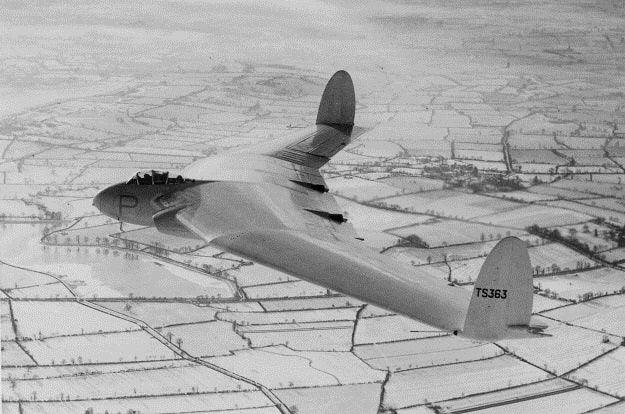Riding A Spitfire
The Spitfire is the most famous and beloved aircraft of World War II. Its unique design and superior agility in dog fighting gave the British Royal Air Force a decisive advantage over the German Luftwaffe during the Battle of Britain.
A Design Classic
The Spitfire Mark I was an elegant and agile fighting machine, and the original design meant that the aircraft could easily be upgraded with new, more powerful engines, and armament.
In 1940 Hitler sent 2,600 Luftwaffe fighters and bombers against the Royal Air Force's 640 Spitfires and Hurricanes.
What began as a war of unequals changed as the war over Britain wore on.
Because of the unique design of the Spitfire, the British could produce more aircraft faster than the Germans, and by the end of the Battle of Britain, the Royal Air Force had shot down 1,887 German aircraft compared to the loss of 1,023 British aircraft.

The Rough Weather Procedure
At RAF Hibaldstowe Aerodrome WAAF (Womens Auxiliary Air Force) flight mechanics were tasked with test flying and delivering aircraft to Royal Air Force Bases around Great Britain during World War II.
All of the eligible men were busy flying the sorties against the Germans during the war, and the lack of men led to the establishment of the WAAF.
RAF Hibaldstowe
Those who worked on the flight line at RAB Hibaldstone (a satellite airport of Kirton Lindsey RAF base) would tell you that 'T for Trouble' was a common expectation for the crews.
A Spitfire with the designation of AB929 had nothing wrong with the old kite, however, due to a perverse sense of humour led the old bird into a ditch.
AB929, despite indulging in every misadventure by putting its pilot in a ditch, she always stopped from breaking his neck. It was well known, however, that "She always brings 'em back alive."
At the base, it was a flight order that one of the ground staff was to sit on the tail of each Spitfire as it taxied from the dispersal area to the distant runway in rough (windy) weather.
The idea was to prevent the wind from tipping over the aircraft on its nose while taxing.
RAF WAAF Margaret Horton
On February 14th, 1945, Leading Aircraftwoman Margaret Horton, an RAF WAAF, was assigned a familiar job; sit on the horizontal stabilizer of a Spitfire to help hold down the tail while it taxied to the runway.
On this particular occasion, Flight Lt. Neil Cox, did not receive the notification of a rough day as he prepared to taxi out to the runway.
The normal procedure to tail sitting was to grab the aircraft's elevator and waggle it before the pilot took to the runway to let him know she would be jumping off just before turning onto the runway.
This time, however, Flight Lt. Cox made a casual gesture out of the cockpit which Margaret took to mean "Hang on, don't go yet."
A big mistake!
The violently increased rate at which the aircraft was taxing told WAAF Horton that something was wrong.
As the Spitfire accelerated down the runway Horton had the good sense to quickly flop herself across the vertical stabilizer with her legs on one side of the fuselage and her torso on the other side.

Horton was only able to get three fingers into the round cutaway portion of the tailplane, and there was no chance of attracting the attention of the pilot or any of the personnel on the ground.
It was at that moment that her fear left her, and she thought "I've muffed it for the last time - better me than most people, but I wish it hadn't happened!"
Margaret's next thought was that there was nothing to harm her, and helped by the clear serene sky, Margaret decided she would be safe whether the flight lasted ten minutes or a couple of hours.
Shortly afterwards Margaret felt the Spitfire gently drop towards the ground into a perfect landing on the runway.
As the aircraft slowed down she slipped off the tailplane, ran back for her beret which had remained on her head until the landing, and made her way back to the dispersal area while the pilot taxied home around the primeter road, still not understanding why his controls failed to function correctly.
Fortunately, another WAAF saw what was happening and dashed off to tell a flight sergeant, who in turn ran to the control tower and let the controllers know what was happening.
They, in turn, told the pilot to make a quick circuit and land but was not told why. He knew something was wrong because of how the controls felt, but he could not see the tail of the aircraft to know what was happening.
The controllers decided it safest not to tell the pilot of the presence of a passenger, so it wasn't until he walked into the flight office to report the aircraft as "unserviceable" that he learned he was the victim of an unusual case of 'parasite drag.'
Back on the ground, Horton announced that after a change of panties and a cigarette, she was good to go back to work.

No matter what uses AB910 may have returned to, she remains proof that, as any Battle of Britain pilot will tell you: "A Spitfire never let anybody down."
I hope you enjoyed this trip through some of the history of aviation. If you enjoyed this trip, and are new to this newsletter, sign up to receive your own weekly newsletter here: Subscribe here:
Until next time, keep your eyes safe and focused on what's ahead of you, Hersch!







Leave a comment
This site is protected by hCaptcha and the hCaptcha Privacy Policy and Terms of Service apply.